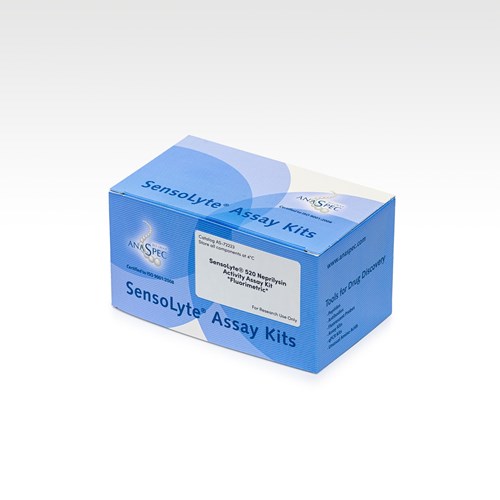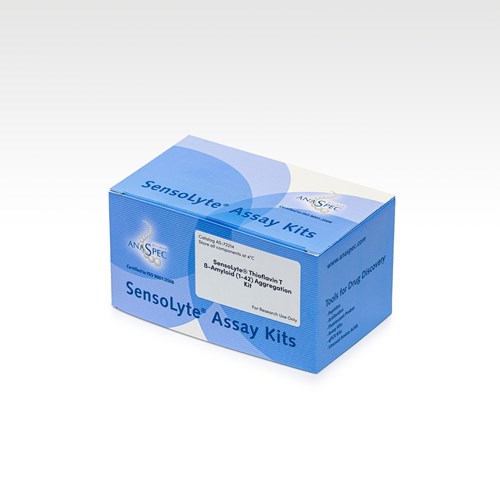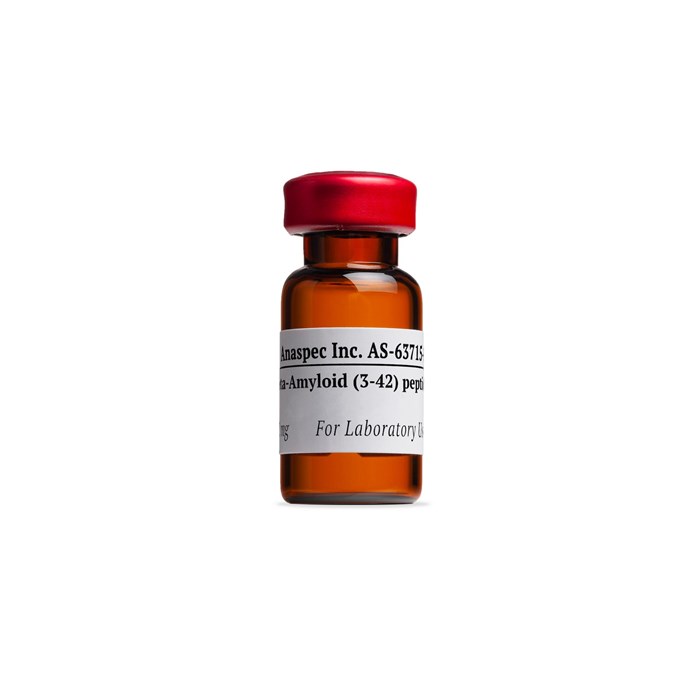Beta-Amyloid (3-42)
- Cat.Number : AS-63715-01
- Manufacturer Ref. :
-
Availability :
In stock
Alternative choices
This peptide is beta-amyloid (1-42) N-terminally truncated. It is the non-pyroglatamate form of beta-Amyloid (3-42). N-terminally truncated pyroglutamate-modified beta-Amyloid forms such as Aß(3-42) and Aß (11- 42) have been described as major compounds in the senile plaques. Pyro-Glu modified beta-Amyloid forms are more resistant to degradation, show higher toxicity and have increased aggregation propensity compared to non-modified beta-Amyloid.
Pyroglutamyl (pGlu) peptides may spontaneously form when either Glutamine (Q) or Glutamic acid (E) is located at the sequence N-terminus. The conversion of Q or E to pGlu is a natural occurrence and in general it is believed that the hydrophobic γ-lactam ring of pGlu may play a role in peptide stability against gastrointestinal proteases. Pyroglutamyl peptides are therefore considered a normal subset of such peptides and are included as part of the peptide purity during HPLC analysis.
Specifications
| Chemistry | |
| Sequence one letter code |
|
|---|---|
| Sequence three letter code |
|
| Molecular Formula |
|
| Molecular Mass/ Weight |
|
| Modification | |
| Conjugation |
|
| Quantity & Purity | |
| Purity |
|
| Storage & stability | |
| Form |
|
| Storage Conditions |
|
| Activity | |
| Biomarker Target | |
| Research Area | |
| Sub-category Research Area | |
| Usage |
|
| Source | |
| Source / Species |
|
| Codes | |
| Code Nacres |
|
Downloads
You may also be interested in the following product(s)


SensoLyte® 520 Neprilysin Activity Assay Kit Fluorimetric - 1 kit

SensoLyte® Thioflavin T ß-Amyloid (1-42) Aggregation Kit - 1 kit
Citations
Pyroglutamate Abeta pathology in APP/PS1KI mice, sporadic and familial Alzheimer’s disease cases
J Neural Transm . 2010 Jan 01 ; 117(1) 85 | DOI : 10.1007/s00702-009-0314-x
- O. Wirths
- et al
